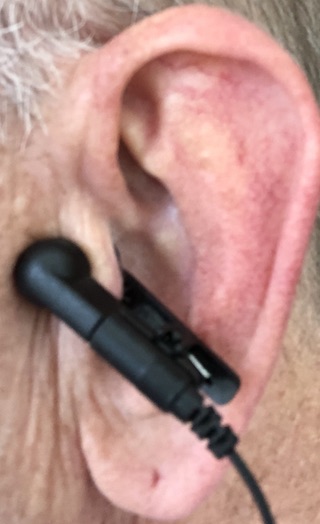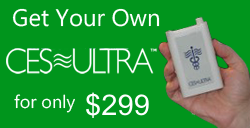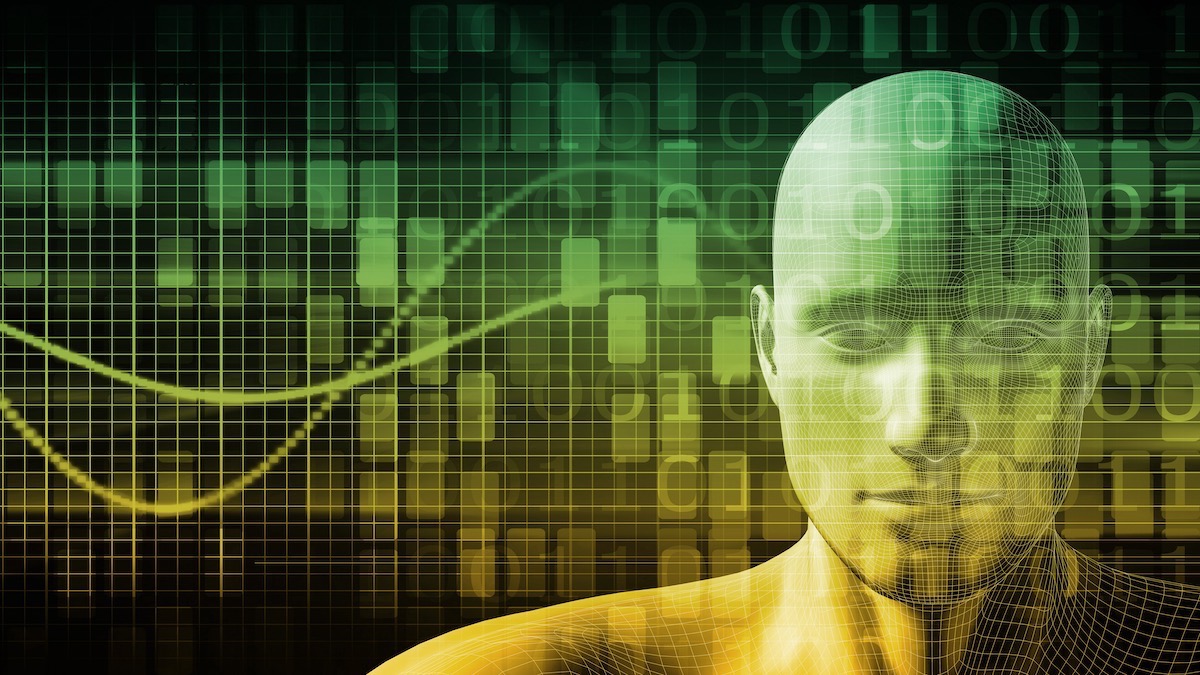Vagus Nerve Stimulation
Vagus nerve stimulation (VNS) is a medical treatment that is routinely used in the treatment of epilepsy and other neurological conditions. VNS studies are not just clinically, but also scientifically informative regarding the role of the vagus nerve in health and disease.
Vagus Nerve Stimulation Device and Method

Vagus nerve stimulation works by applying electrical impulses to the vagus nerve. The stimulation of the vagus nerve can be performed in two different ways: a direct invasive stimulation, which is currently the most frequent application and an indirect transcutaneous non-invasive stimulation. Invasive VNS (iVNS) requires the surgical implantation of a small pulse generator subcutaneously in the left thoracic region. In contrast to iVNS, transcutaneous VNS (tVNS) allows for a non-invasive stimulation of the vagus nerve without any surgical procedure. Here, the stimulator is usually attached to the auricular concha via ear clips and delivers electrical impulses at the subcutaneous course of the afferent auricular branch of the vagus nerve (2).
A pilot study that examined the application of VNS in 60 patients with treatment-resistant depressive disorder showed a significant clinical improvement in 30–37% of patients and a high tolerability (3). Five years later, the stimulation of the vagus nerve for the treatment of refractory depression was approved by the U.S. Food and Drug Administration (FDA) (4). Since then, the safety and efficacy of VNS in depression has been demonstrated in numerous observational studies as can be seen below. In contrast, there is no randomized, placebo-control clinical trial that reliably demonstrates antidepressant effects of VNS.
The vagus nerve represents the main component of the parasympathetic nervous system, which oversees a vast array of crucial bodily functions, including control of mood, immune response, digestion, and heart rate. It establishes one of the connections between the brain and the gastrointestinal tract and sends information about the state of the inner organs to the brain via afferent fibers. In this review article, we discuss various functions of the vagus nerve which make it an attractive target in treating psychiatric and gastrointestinal disorders. There is preliminary evidence that vagus nerve stimulation is a promising add-on treatment for treatment-refractory depression, posttraumatic stress disorder, and inflammatory bowel disease. Treatments that target the vagus nerve increase the vagal tone and inhibit cytokine production. Both are important mechanism of resiliency. The stimulation of vagal afferent fibers in the gut influences monoaminergic brain systems in the brain stem that play crucial roles in major psychiatric conditions, such as mood and anxiety disorders. In line, there is preliminary evidence for gut bacteria to have beneficial effect on mood and anxiety, partly by affecting the activity of the vagus nerve. Since, the vagal tone is correlated with capacity to regulate stress responses and can be influenced by breathing, its increase through meditation and yoga likely contribute to resilience and the mitigation of mood and anxiety symptoms.
VNS In Inflammatory Bowel Disease (IBD)
Vagus nerve stimulation attenuates the systemic inflammatory response to endotoxin (5) and intestinal inflammation (6). The VNs also indirectly modulates immune activity of the spleen through connections with the splenic sympathetic nerve (7). In rats with colonic inflammation, the 3-hour long daily VNS for a period of 5 days led to a reduction in inflammatory markers and an improvement in symptoms of colitis (8).
Vagus nerve stimulation should be of interest in other inflammatory diseases, such as rheumatoid arthritis, another TNF-α-mediated disease. In patients with rheumatoid arthritis, a study that demonstrated an improvement of symptoms in the early and late stages of the disease through 1–4 minutes of VNS daily (9). This study was also the first to show that VNS inhibits the production of TNF-α (also known as TNF-alpha) and other cytokines in humans by stimulating the inflammatory reflex, leading to an improvement of symptom severity. These data argue for an anti-inflammatory role of the vagus nerve and provide potential therapeutic applications for patients with IBDs (10, 8, 11).
Conclusion
The interaction between the gut and the brain is based on a complex system that includes not only neural but also endocrine, immune, and humoral links.
The vagus nerve is an essential part of the brain–gut axis and plays an important role in the modulation of inflammation, the maintenance of intestinal homeostasis, and the regulation of food intake, satiety, and energy homeostasis. An interaction between nutrition and the vagus nerve is well known, and vagal tone can influence food intake and weight gain.
Moreover, the vagus nerve plays an important role in the pathogenesis of psychiatric disorders, obesity as well as other stress-induced and inflammatory diseases.
Vagus nerve stimulation and several meditation techniques demonstrate that modulating the vagus nerve has a therapeutic effect, mainly due to its relaxing and anti-inflammatory properties.
Extinction paired with VNS is more rapid than extinction paired with sham stimulation. As it is currently approved by the Federal FDA for depression and seizure prevention, VNS is a readily available and promising adjunct to exposure therapy for the treatment of severe anxiety disorders.
Vagus nerve stimulation is an effective anticonvulsant device and has shown in observational studies antidepressant effects in chronic treatment-resistant depression. Because the vagus nerve sends information to brain regions is important in the stress response (LC, orbitofrontal cortex, insula, hippocampus, and amygdala), this pathway might be involved in perceiving or manifesting various somatic and cognitive symptoms that characterize stress-related disorders.
Psychotropic drugs, such as serotonin reuptake inhibitors, have effects on both the brain and the gastrointestinal tract and consequently should be understood as modulators of the brain–gut axis.
Research investigating the interaction between nutritive factors, somatic factors, such as heart rate, psychological and pharmacological treatments, and vagal activity has the potential to lead to integrative treatment options that incorporate VNS, nutritional approaches, drugs, and psychological interventions, such as mindfulness-based approaches, which can be tailored to the needs of the individual patient.
A Final Thought About Vagus Nerve Stimulation And CES
Cranial Electrotherapy Stimulation (CES) has been engaging Vagus nerve stimulation for decades, through the use of ear clips to stimulate the nerve endings in the ears. Recent data from clinical studies and practical application reflect the positive results that may be gained by applying low amplitude, extremely low frequency (ELF) electric currents, through the Vagus nerve system. The CES Ultra cranial electrotherapy stimulator device incorporates both ELF and ear clip attachments, as part of its standard application to treat anxiety and insomnia without medication.

Rated 4.8/5 based on 18 user reviews
Several months ago I suffered with severe insomnia. I couldn’t get more than 3 or 4 hours of sleep a night, and sometimes I couldn’t sleep at all. I tried all kinds of sleep medications and supplements without success. I saw a neurologist who specializes in sleep problems, but she was of little help. I did some research on the internet and came across studies with CES. I decided to buy a CES Ultra. Within 2 weeks I was able to get 7 hours of sleep a night. I used it every day for two months and during that time I had no insomnia. Now I find that using it 2 or 3 times a week is sufficient for me to get a good night’s sleep.
– Ray W.
Citations
- Frontiers in Psychiatry – Vagus Nerve as Modulator of the Brain–Gut Axis in Psychiatric and Inflammatory Disorders (original publication)
- National Center for Biotechnology Information, U.S. National Library of Medicine – Effect of transcutaneous auricular vagus nerve stimulation on major depressive disorder: A nonrandomized controlled pilot study
- Springer Nature – Vagus Nerve Stimulation (VNS™) for Treatment-Resistant Depression: Efficacy, Side Effects, and Predictors of Outcome
- ScienceDirect® – Safety and efficacy of Vagus Nerve Stimulation in treatment-resistant depression. A systematic review
- Springer Nature – Vagus nerve stimulation attenuates the systemic inflammatory response to endotoxin
- Springer Nature – Stimulation of the vagus nerve attenuates macrophage activation by activating the Jak2-STAT3 signaling pathway
- American Association for the Advancement of Science – Acetylcholine-Synthesizing T Cells Relay Neural Signals in a Vagus Nerve Circuit
- ScienceDirect – Anti-inflammatory effect of vagus nerve stimulation in a rat model of inflammatory bowel disease
- PNAS – Vagus nerve stimulation inhibits cytokine production and attenuates disease severity in rheumatoid arthritis
- The Physiological Society – Anti‐inflammatory properties of the vagus nerve: potential therapeutic implications of vagus nerve stimulation
- Clinical Medicine Insights: Gastroenterology – Bioelectrical Stimulation for the Reduction of Inflammation in Inflammatory Bowel Disease
- Medium Elemental – Science Confirms That the Vagus Nerve Is Key to Well-being
- CES Ultra – The Role of CES in Fighting Inflammation
- CES Ultra – Non-Drug Relief From Anxiety.

